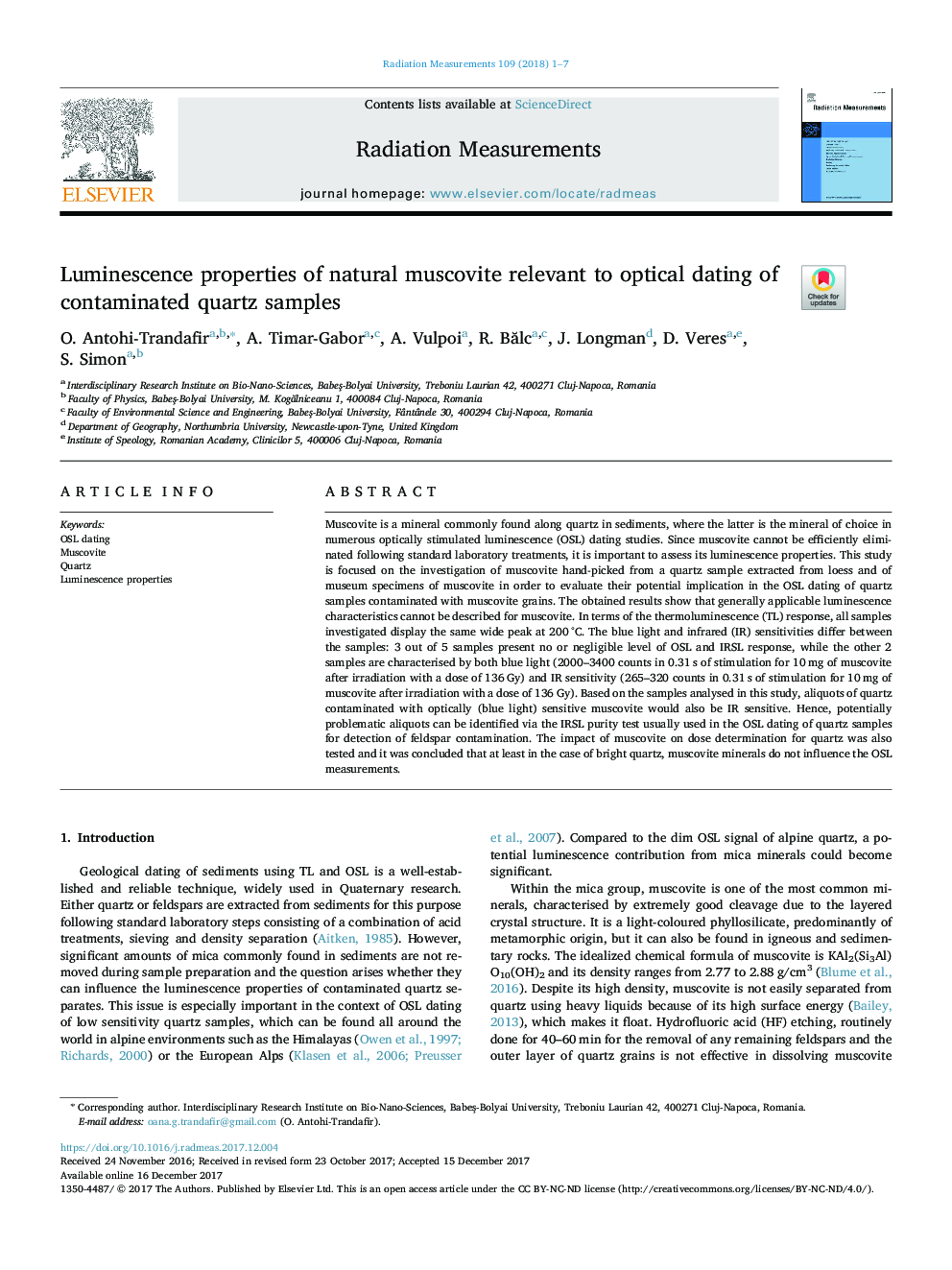| Article ID | Journal | Published Year | Pages | File Type |
|---|---|---|---|---|
| 8249890 | Radiation Measurements | 2018 | 7 Pages |
Abstract
Muscovite is a mineral commonly found along quartz in sediments, where the latter is the mineral of choice in numerous optically stimulated luminescence (OSL) dating studies. Since muscovite cannot be efficiently eliminated following standard laboratory treatments, it is important to assess its luminescence properties. This study is focused on the investigation of muscovite hand-picked from a quartz sample extracted from loess and of museum specimens of muscovite in order to evaluate their potential implication in the OSL dating of quartz samples contaminated with muscovite grains. The obtained results show that generally applicable luminescence characteristics cannot be described for muscovite. In terms of the thermoluminescence (TL) response, all samples investigated display the same wide peak at 200â¯Â°C. The blue light and infrared (IR) sensitivities differ between the samples: 3 out of 5 samples present no or negligible level of OSL and IRSL response, while the other 2 samples are characterised by both blue light (2000-3400 counts in 0.31â¯s of stimulation for 10â¯mg of muscovite after irradiation with a dose of 136â¯Gy) and IR sensitivity (265-320 counts in 0.31â¯s of stimulation for 10â¯mg of muscovite after irradiation with a dose of 136â¯Gy). Based on the samples analysed in this study, aliquots of quartz contaminated with optically (blue light) sensitive muscovite would also be IR sensitive. Hence, potentially problematic aliquots can be identified via the IRSL purity test usually used in the OSL dating of quartz samples for detection of feldspar contamination. The impact of muscovite on dose determination for quartz was also tested and it was concluded that at least in the case of bright quartz, muscovite minerals do not influence the OSL measurements.
Related Topics
Physical Sciences and Engineering
Physics and Astronomy
Radiation
Authors
O. Antohi-Trandafir, A. Timar-Gabor, A. Vulpoi, R. BÄlc, J. Longman, D. Veres, S. Simon,
